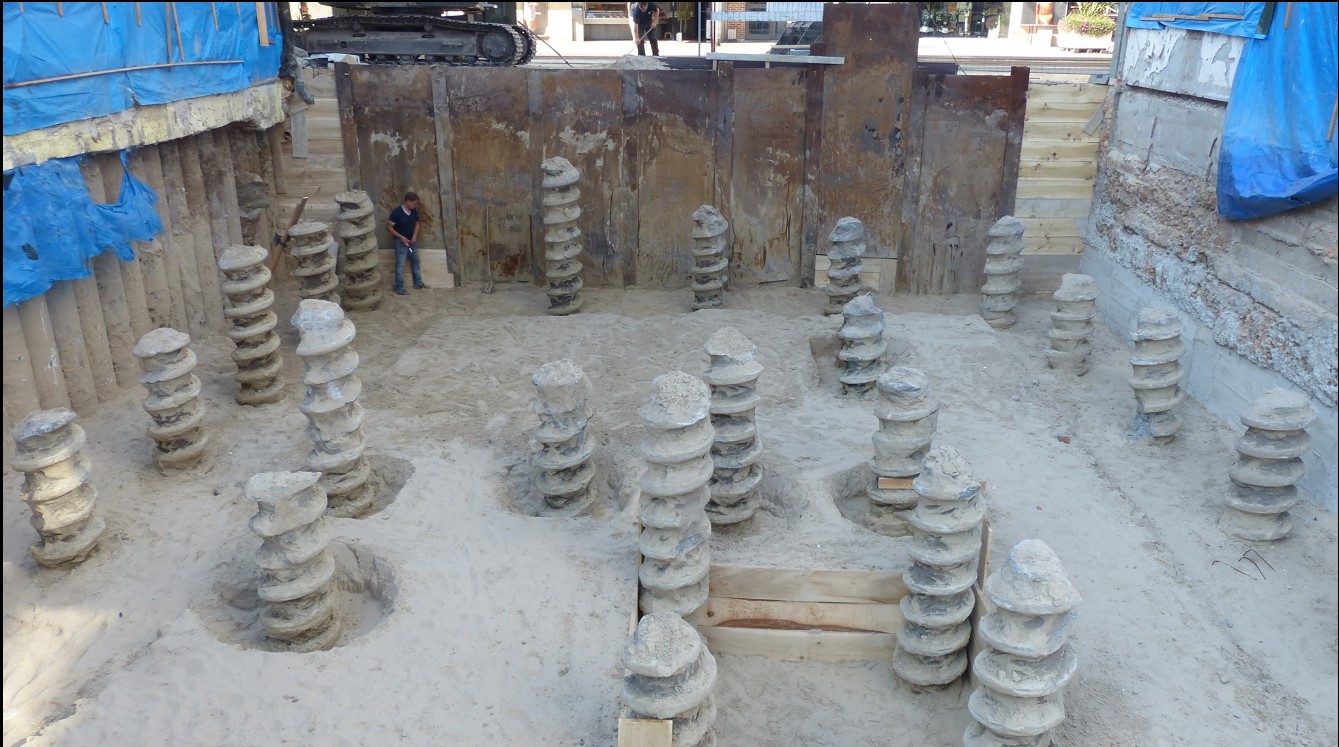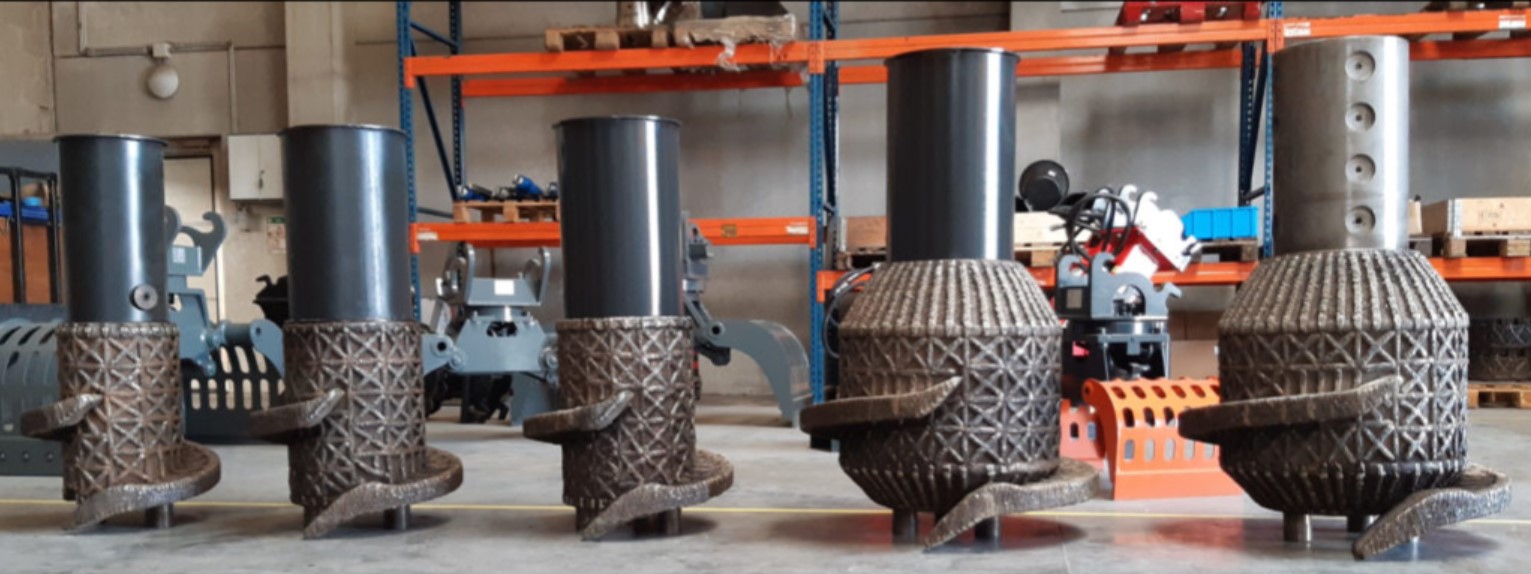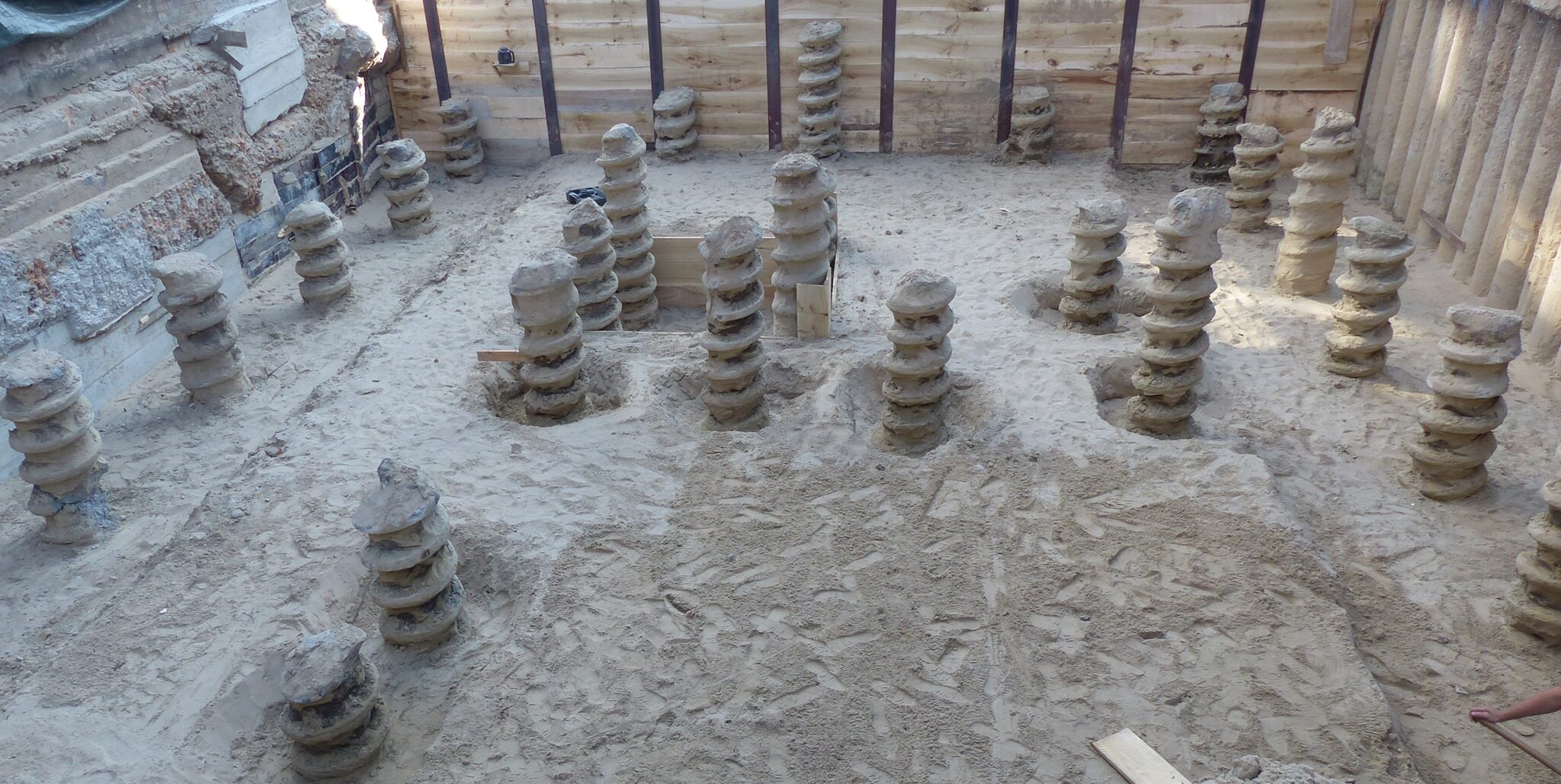Olivier Piles
An Olivier pile is a patented drilled displacement pile made of concrete or reinforced concrete with a screw-shaped shaft (helical shaft) which is performed without soil removal. Due to its screw-shaped shaft, the Olivier pile is particularly suitable for use in soils with low load-bearing capacities, such as clay and loam, but can be applied in almost all types of soil. contrary to traditional FDP piles, the Olivier pile is 100% displaced until the bottom of the pile and no soil is transported to the surface. An Olivier pile can be made with any foundation machine with a minimum torque from 10t/m.
The Belgian Gerdi Vankeirsbilck applied for the production patent for the Olivier pile in April 1996. This technique was implemented by his own company and various license’s have been granted in Belgium and abroad. In 2018 a patent was applied for drilling without the use of a lost bit.
An Olivier pile is drilled into the ground by the use of drilling rig with a top-type rotary drive with variable rate of penetration. A lost tip is attached to a partial-flight auger which, in turn, is attached to a casing. The casing, which is rotated clockwise continuously, penetrates the ground by the action of a torque and a vertical force. At the desired installation depth, the lost tip is released, and the reinforcing cage is inserted into the casing. Concrete is then placed inside the casing through a funnel. The casing and the partial flight auger are extracted by counter clockwise rotation. The shaft of the Olivier pile has the shape of a screw.
Common diameters of the auger head
• diameter 510mm
• diameter 610mm
• diameter 710mm
• An Olivier Pile is screwed into the ground without vibration, the soil is displaced sideways. No soil is transported to the surface.
• The rotary pressure is compared with the results of the cone penetration test.
• The rotary head with a maximum torque of 55 ton meter is pulled up and down along an adjustable leader, which is strong enough to hold all the forces. The leader is adjustable in all directions, so that it is possible to drill leaning backward or forward.
• When the desired depth has been reached, it is possible to place reinforcement through the casing.
• Then the auger head is screwed back. The lost tip is disconnected from the auger head and left behind. During the screw back process, the soil is displaced again. This system is called ‘double soil displacement’.
• While screwing back, concrete is poured into the casing. Because of the weight of the concrete, the concrete is injected into the space under the auger head. During the screwing back, the Olivier Pile is formed with the screw-shaped shaft. The screw-shape has a pitch of ±250mm (±10″) and an external diameter of ±200mm (±8″) larger than the base shaft. This process continues until the entire casing and the auger head are back on the ground.



